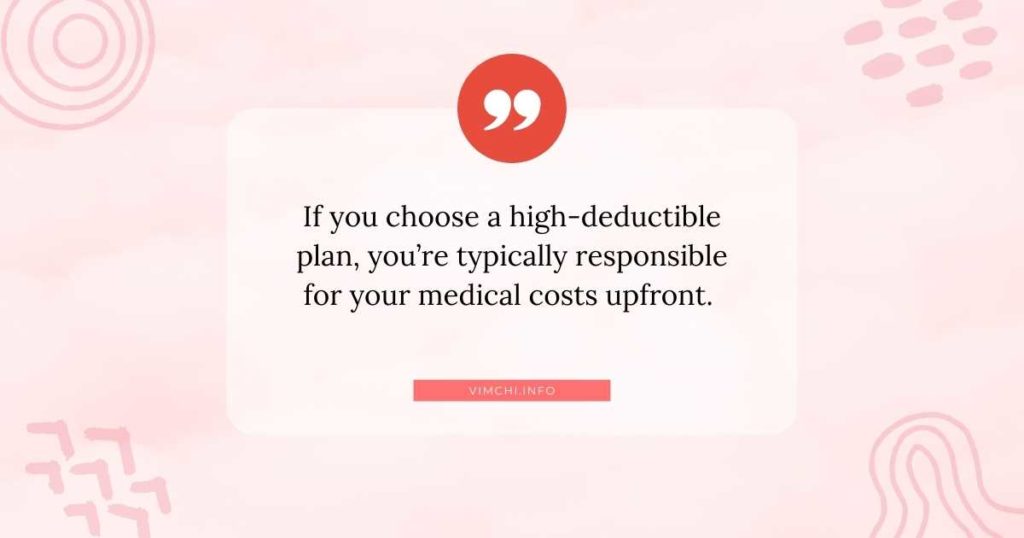
Your health insurance doesn’t pay the entire cost of your healthcare treatment. Rather, you and your health insurance will pay for the expenses. The deductible is just one of the out-of-pocket costs that you need to pay. In this post, let’s look at how health insurance deductibles work.
Keep reading to better understand it.
How Health Insurance Deductibles Work?
Any health insurance policy has a deductible. It’s the amount of money you pay for your healthcare services before your health insurance policy starts to pay.
For instance, if your policy’s deductible is $500 and your healthcare cost is $500, you need to pay $1,000 first. Then, if you need another treatment that costs $1,500, your health insurance policy will start to provide a percentage of the cost. It will not pay the full $1,500. Rather, it will pay a percentage of it.
How much your health insurance will pay will depend on your policy. You need to check the amount by reading the terms of your agreement with the health insurer.
It’s important to note that some healthcare costs won’t go toward the deductible while others do.
The cots that can count to the deductible will include lab tests, anesthesia, hospitalization bills, doctor and therapists visits, and MRIs and CAT scans.
See Also: How to Calculate Best Health Insurance Plan?
How to Decide What Deductible Amount to Pick?
If you’re healthy, you may not need costly medical services during the year. Thus, you may obtain health insurance with a higher deductible but lower premium. It’s a good choice.
However, if you have a medical condition, you will want to opt for a policy with a lower deductible but a higher monthly premium.
Is Deductible the Same as Copay?
Some health plans don’t have copays but only deductibles. However, most health insurance policies have both deductibles and copays.
These two out-of-pocket costs are different.
A deductible is an amount you pay for eligible medical services before your plan starts to pay a portion of the covered services.
Copay, on the other hand, is a flat fee and you need to pay for it at the time of service. Even if you have met your deductible, you still need to pay the copay.
However, what you pay in copay may go toward meeting your deductible. But it still depends on your health plan.
See Also: Health Insurance vs Savings Account
What Deductible to Choose?

It depends on your current health status. If you need medical services frequently, you may choose a plan with high deductibles.
A high-deductible plan carries lower premiums. It requires more out-of-pocket spending before your policy starts paying for your care.
If you opt for a low-deductible plan, you will need to pay more for your monthly premiums. However, the cost can be predictable.
If your health plan has a deductible of $1,400, then it’s a high-deductible plan. But this plan covers preventative care benefits at minimal costs.
This type of plan covers the following services:
- Immunizations
- Yearly physical checkups
- Obesity weight-loss programs
- Prenatal care and well-child visits
If you choose a high-deductible plan, you’re typically responsible for your medical costs upfront. You need to choose lower-cost providers to help you cut your expenses.
Unfortunately, though, most people with high-deductible plans don’t shop around for their health care. Many of them reduced their healthcare costs by skipping out on medication or some essential healthcare services.
However, if you have a high-deductible plan, you can be eligible for a health savings account. That is, you can save your funds in a health savings account that is tax-advantaged.
It means that you can direct your funds from your paycheck pretax to HSA. However, there’s a yearly HSA contribution limit of $3,600 since 2022. If you’re employed, you can contribute to your HSA.
What’s good about HSA is that you can earn interest. You can also use it to invest in stocks or mutual funds. And if you need medical care, you can use the fund for your healthcare expenses.
See Also: How Much Does Health Insurance Cost in the USA?
Lower Premiums
One of the best things about having a high-deductible plan is that it comes with lower premiums. It costs less each month compared to traditional health plans with lower deductibles.
Another reason many are attracted to obtaining a high-deductible plan is that they can be eligible for an HSA. You can put thousands of your pretax dollars into this account. You can use the fund for medical expenses or invest the money so it will grow over time.
High Costs
However, if you choose this kind of plan and you have a chronic illness, you may find yourself paying more for out-of-pocket expenses.
In that case, a high-deductible health plan may not be right for everyone. Rather, it’s only ideal for consumers who don’t seek medical care frequently.
But it’s not suitable for you if you’re pregnant or you suffer from a chronic condition because you will have to see your doctor frequently.
Furthermore, it’s not ideal for you if you are taking multiple expensive prescription drugs.
Summary
How health insurance deductibles work? Deductibles are the amount you pay first before your health insurance plan starts covering your healthcare expenses. You can choose to have a high-deductible plan with a low premium or choose to have a low-deductible policy with a high premium. Which plan to pick is entirely up to you. But you need to consider your health status.
Speak Now ... Or Forever Hold Your Peace